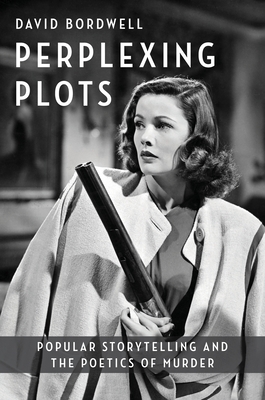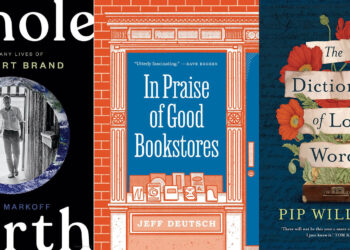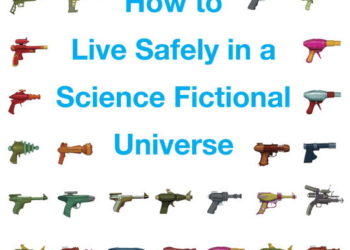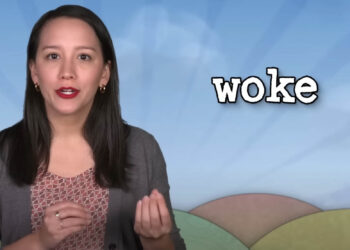NOTE: We’re mid-way through summer and still people are looking for good books to take on vacation. Academics are still hopeful that they’ll catch up on some serious reading in their field and students are still procrastinating over any assigned reading. Whether or not you fall into any of those categories, today’s Scholarly Kitchen post is part of a short series of book reviews of humanities titles emerging from independent and university presses. Each one represents a great read.
The entertainment industry has trained us to associate the summer with blockbuster films. When the mercury in the thermometer is soaring in July, where else do you go but to an air-conditioned movie theater, to scarf down popcorn and watch the action on the big screen. There was a reason that #Barbenheimer had such a great opening weekend!
Generally speaking, a film audience isn’t thinking about how they are being told a story; only infrequently will their brains register a particularly clever use of camera angles or flashback. Occasionally, if mystified by an ending (as with Christopher Nolan’s 2010 movie, Inception), we may turn to a buddy to ask how they interpreted some portion of what was on-screen. But much of our visual literacy has been developed through osmosis, by exposure over time to the means by which directors deliver their message.
 Over the course of the past 80 years, the creators of entertainment have adapted and incorporated story-telling devices and techniques to deliver increasingly sophisticated tales. On that basis, this summer’s movie-goers may enjoy sitting down with David Bordwell’s recent book, Perplexing Plots: Popular Storytelling and the Poetics of Murder (Columbia University Press, 2023). Similarly, devotees of the British Libraries’ Crime Classics series are likely to find Perplexing Plots a fun read. Just how might the structure of Anthony Berkeley’s The Poisoned Chocolates Case be relevant to modern movie-making?
Over the course of the past 80 years, the creators of entertainment have adapted and incorporated story-telling devices and techniques to deliver increasingly sophisticated tales. On that basis, this summer’s movie-goers may enjoy sitting down with David Bordwell’s recent book, Perplexing Plots: Popular Storytelling and the Poetics of Murder (Columbia University Press, 2023). Similarly, devotees of the British Libraries’ Crime Classics series are likely to find Perplexing Plots a fun read. Just how might the structure of Anthony Berkeley’s The Poisoned Chocolates Case be relevant to modern movie-making?
A quick tour of the book’s index indicates an exciting scope of discussion. Yes, there are the standard “brand names” of 100 years of detective fiction – Christie, Chandler, Highsmith, Hammett, etc. – but there are also less well-known creators, such as Barbara Meredith, Richard Hull, and Frances Iles. The same is true of the films mentioned. Bordwell opens with a quick analysis of Quentin Tarantino’s Pulp Fiction, but also discusses directors Alfred Hitchcock and Christopher Nolan. The crossover between modern crime fiction and movie-making is analyzed by a thorough discussion of Gillian Flynn’s best-selling Gone Girl, film and novel.
There are brief obligatory references to film works by Jean Cocteau and Orson Welles, but Bordwell is primarily interested in how creators deliver meaning in the context of popular culture – the multiplex rather than art house entertainment. He monitors how creators convey the passage or shift of time, play with points of view, and juxtapose narrative blocks while delivering an immersive experience. Bordwell writes self-deprecatingly that there will be those who find his examination of narrative craftsmanship “plodding” but his prose is entirely accessible to a general readership.
As one might expect in a discussion of a visual medium, there are plenty of movie stills provided to illustrate how information is shared with the audience, referencing D.W. Griffith’s Intolerance (1916) as well as works by Tarantino and Nolan. Bordwell draws attention to relatively obscure movies such as Behind Green Lights (1946) and The Woman in Question (1950). I was able to view the former through Amazon Prime Video but have yet to gain access to The Woman in Question.
Halfway through Perplexing Plots, I reached out to a pal in Ireland who had introduced me to John Yorke’s excellent discussion, Into the Woods: The Five-Act Journey Into Story (Abrams, 2014). On the strength of my assurance that Bordwell’s book would be an excellent complement to Yorke, he hit the “buy” button, but admitted to hesitating at the pricing. (The book is available in multiple formats, but the gap between the hardcover and the ebook is noticeable. My buddy would have preferred the hardcover format for his specific use.)
Serious readers may indeed blanch when the cost of a hardcover book runs four times that of a paperback or licensed ebook. Such pricing is one approach that publishers may adopt when trying to serve very different market segments. Institutional buyers may be willing to make the investment in hardcover titles but it gives rise to any number of questions. When does the hardcover format cease to be cost-effective? How many of a publisher’s (preferred) buyers would be disaffected if that format were to be eliminated? I imagine that publishers and librarians are quietly working to their own solution, but what is the serious reader hoping for?
An interesting angle on the movie, Oppenheimer, appeared in the New York Times (gifted article), discussing the technology preferred by Chris Nolan for making and viewing his films. Specifically, the director favors IMAX film and cameras for high-resolution production and IMAX projectors and screens for a more immersive audience experience. The technology is expensive and unexpectedly weighty. Business Insider reported that the IMAX reel holding Nolan’s three-hour film was almost too large to fit the projectors, at a full 600 pounds! IMAX promoters made a point of announcing that fewer than thirty movie theaters worldwide were selected as suitable premiere locations for viewing Oppenheimer as Nolan intended it. That experience comes with a price tag – $30 per movie ticket per showing in Manhattan. The Times article closes out with an anecdote where studio executives tell Nolan that it is not the format used that matters, it’s the story (the narrative) that does. Nolan strongly disagrees. For him, the work is about the enhanced image and delivering a more immersive experience. There’s a balance between the two views.
Book publishing (like movie-making) in the 21st century is complicated; it’s about gauging the right investment of content development, production and delivery format. Buyers may still hesitate over the cost of acquisition even when providers get the equation right. That so many presses do manage to get it right is cause for celebration.



